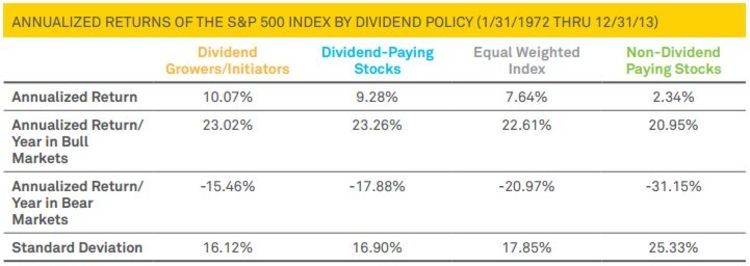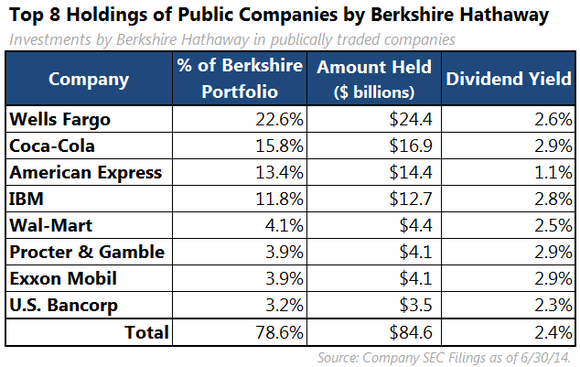If a Stock Doesn t Pay Dividends How Can It Be Worth Anything
Post on: 24 Май, 2015 No Comment

Understanding How Stocks Without Dividends Can Still Have Value
Although dividend stocks have proven to be more profitable for investors in the long-run, that doesn’t mean non-dividend paying stocks are necessarily bad. To understand the reasons, I’ve created a story to illustrate the way investments compound. Altrendo Travel, Getty Images
New investors often want to know: If a stock doesn’t pay dividends, isn’t buying it like participating in a Ponzi scheme because your return depends on what the next guy in line is willing to pay for your shares? That is a very good question and it’s important you understand the answer.
To help you really get down into the details and understand non-dividend paying stocks, I created a story that will make this topic easy to grasp. Don’t forget, though, that dividends are a great source of return for shareholders, especially when combined with dollar cost averaging. Investing in non-dividend paying stocks should be the exception, not the rule.
American Apple Orchards, Inc.
Imagine that your father and your uncle decide that they want to start a farming business. They each contribute $150,000 of their savings to a new company, American Apple Orchards, Inc. They file the paperwork with the Secretary of State, get a business license. and go down to the local bank to deposit the $300,000 in cash. They divide the company into 100,000 pieces (shares) at $3 per share, each man receiving half of the stock for his contribution. At this point, nothing has changed. (They have a company with no assets other than the $300,000 they contributed to it. They then cut that company into 100,000 pieces. Therefore, each of those pieces represents $3 worth of cash in the bank account because $300,000 divided by 100,000 shares = $3 book value per share.)
The new company uses the $300,000 to secure a $700,000 business loan. This gives them $1,000,000 in cash and $700,000 in debt with a $300,000 net worth (consisting of their original contribution to the company).
The company buys 300 acres of good farmland at $2,500 per acre ($750,000 total), and uses the remaining $250,000 for equipment, working capital. and start-up costs.
The first year, the farm generates $43,000 in pre-tax operating profit. After taxes, this amounts to $30,000.
At the end of the year, your father and uncle are sitting at the kitchen table, holding the Board of Directors meeting for American Apple Orchards, Inc. They see that the annual report the accountant prepared shows $300,000 in shareholder equity at the beginning, with a $30,000 net profit. for $330,000 ending shareholder equity.
In other words, for all of their effort, they earned $30,000 on their $300,000 investment. (Note: Instead of cash, however, the assets consist of farm land, apple trees, tractors, stationary, etc.) That is a 10% return on book value. If interest rates are 4% at the time, this is a good return. Not only did your family earn a good return on their investment, but your father and uncle got to live their dream by farming apples.
Being older men, and wise in the ways of the world, your father and uncle realize that the accountant left something out of the annual report. (It’s not the accountant’s fault; the GAAP accounting rules don’t allow him to put it in the figures.) What is it? Real estate appreciation.
If inflation ran 3%, the farm land probably kept pace, meaning that the appreciation was $22,500. In other words, if they sold their farm at the end of the year, they would get $772,500, not the $750,000 they paid, generating a gain on real estate of $22,500. GAAP accounting rules don’t allow this to show up anywhere. That’s important to understand.
This means that the $300,000 they originally contributed to the company has grown to $330,000 due to the $30,000 in profits they earned after tax on their apple sales. Yet, they are also $22,500 richer due to the higher value of their land, which won’t be included due to accounting rules. That means their real return for the year was roughly $52,500, or 17.5%. (To be fair, you would have to back out deferred taxes for the money that would be owed if they were to sell the land but I’ll keep it simple.)

The Choice They Face: To Pay Dividends or Reinvest in the Company?
Now, your father and uncle have a choice. They have a business that has $330,000 in book value but that they know is worth $352,500 ($300,000 contributed capital + $30,000 net profit + $22,500 appreciation in land). So, the accountant says their shares are worth $3.30 each ($330,000 divided by 100,000 pieces). They know their stock is worth $3.52 per share ($352,000 divided by 100,000 pieces).
They have a choice. Do they pay the $30,000 in cash they earned out as a $0.30 per share dividend ($30,000 net income divided by 100,000 shares = $0.30 per share dividend)? Or, do they turn around and pour that $30,000 back into the business to expand? If the orchard can earn 10% on capital again next year, profits should increase to $33,000. Compared to the 4% the local bank pays, wouldn’t they be better off not paying out that money as a cash dividend and instead going for the 10% return?
Compounding That Dividend Decision for 20 Years
Imagine that this conversation happens every year for 20 years. Each year, your father and uncle decide to reinvest the profit instead of paying a cash dividend, and each year they earn 10% on capital. The real estate also appreciates 3% per year. The entire time, they never issue, buy, or sell a new share of stock.
On the company’s 20th year anniversary, net income is going to be $201,800. Book value, representing profits poured back into the company for expansion, would have grown from $300,000 to $2,000,000. On top of that $2,000,000, though, is the real estate. The land would have appreciated $605,000 from the first day of operation, not one penny of which has ever shown up anywhere in the financial statements. Thus, the book value of the company is $2,000,000 but the true value of the business is at least $2,605,000.
From a book value perspective, the shares are worth $20 each ($2,000,000 book value divided by 100,000 shares). From a real value perspective, factoring in the value of the land, the shares are worth $26.05 each ($2,605,000 divided by 100,000 shares).
If the company were to pay out 100% of its profits in cash dividends. cash dividends would be just shy of $2.02 per share ($201,800 net profit for the year divided by 100,000 shares = $2.02 per share cash dividends).














